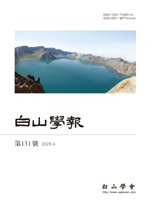본고에서는 서울·인천·경기도 지역(한반도 중서부 지역)에서 발견된 신석기시대 주거지와 청동기시대 주거지들의 장축의 길이에 차이가 나타나는지에 대해 살펴보고, 각 시대의 주거 유적들과 농경유적들의 위치, 그리고 각각의 유적들이 위치한 지역의 농경과 관련된 토양들과의 관계를 살펴봄으로써 세장방형 주거지의 출현 배경 및 사회적 성격에 대하여 추론해 보고자 하였다. 그 결과, 신석기시대의 주거지들의 장축의 평균 길이(450.52cm)와 청동기시대 주거지들의 장축의 평균 길이(838.68cm) 에서 통계적으로 유의미한 차이를 나타내었고, 시대별 주거지들이 위치한 지역과 해당 지역들의 토양이 농경과 연관성이 있다는 결과가 도출되었다. 즉, 신석기시대, 청동기시대 주거지들이 밭농사에 적합한 토양에서 가장 높은 빈도를 나타냈으나, 신석기시대에 비해 청동기시대의 주거유적들이 벼농사와 관련된 지역에 더 많이 축조되었음을 확인할 수 있었고, 청동기시대 유적들 중 세장방형 주거지들이발견되는 유적들은 한 곳을 제외하고 모두 벼농사에 적합한 토양에서 발견되었다. 한편, 세장방형 주거지들이 확인되는 주거유적들의 주거지 장축의 길이를 기준으로 주거지의 기수를 확인해 보았을 때, 세장방형 주거지들이 족장의 권위와 위세를 나타내기 위해 축조되었다고 보기에는 오산 내삼미동, 하남 미사리, 화성 동학산에서와 같이 다수의 세장방형 주거지들이 발견되는 유적들이 존재하며, 개별주거지들에 대한 방사성탄소연대의 부족으로 단정할 수는 없지만, 세장방형 주거지들의 성격을 해석함에 있어서 다른 각도에서의 접근이 필요할 것으로 사료된다.
In this paper, it will be examined whether there were differences in the lengths of the long axis of the Neolithic and Bronze Age dwellings found in Seoul, Incheon, and Gyeonggi-province (the midwestern part of the Korean Peninsula), and be examined the locations of residential and agricultural sites from each era and their relationships with soils related to agriculture in the areas where each site is located, thereby attempting to infer the background and social characteristics of the emergence of the Thin-rectangular houses. As a result, the average of the long axis of the Neolithic period (450.52 cm) and the Bronze Age (838.68 cm) showed a statistically significant difference, and the results showed that there was a correlation between the location of residential areas by era and soil-related to agriculture. That is, both the Neolithic period and the Bronze Age showed the highest frequency in soil suitable for upland farming, but it was confirmed that more residential remains of the Bronze Age were built in areas related to rice farming compared to the Neolithic period, and among the Bronze Age sites, all but one of the sites where the Thin-rectangular houses were discovered were found in soil suitable for rice farming. On the other hand, when confirming the numbers of the settlements based on the length of the thin-rectangular houses confirmed, it is thought that a different approach, for example, the possibility of the existence of matrilineal characteristics, is necessary in interpreting the nature of the thin-rectangular houses.
Ⅰ. 머리말
Ⅱ. 자료와 방법론
Ⅲ. 분석 결과 및 고찰
Ⅳ. 맺음말
(0)
(0)
